Rjukan-Notodden Industrial Heritage Site is situated in Telemark, a historic region in Norway. The Rjukan-Notodden Industrial Heritage Site marked the beginning of the modern industrial revolution in Norway The site is situated around Lake Heddalsvatnet and the plant built by the Norsk Hydro in 1905, this plant used air to capture nitrogen to create artificial fertilizer. Norsk Hydro started in Notodden with the power of the Tinnfoss waterfall, using water to generate electric power. Notodden became the pioneering place to develop methods of large scale production. In 1907, the largest power station of Europe was built in Svelgvoss, six km north of Notodden. In 1911, the largest power station in the world was built to harness the energy of the Rjukan waterfall, the Vemork hydroelectric plant, located just outside the town of Rjukan. The Vemork hydroelectric plant supplied electricity to the saltpetre factories of Rjukan and from 1929 to the hydrogen factory in Vemork. A new production method was developed in 1928, the byproduct was heavy water. The Vemork hydroelectric plant was an Allied target during WWII. The production of heavy water had to be stopped to sabotage the nazis, who had invaded Norway in 1940 and had confiscated the plant. The Rjukan-Notodden Industrial Heritage Site consists of hydroelectric power plants, factories, transportsystems and company towns. The railways of the Rjukanbanen and Tinnosbanen and the Telemark Waterways, composed of lakes and rivers, were used to transport goods and people. The Rjukan-Notodden Industrial Heritage Site gained status as a UNESCO World Heritage in 2015.
www.werelderfgoedfotos.nl © Copyright World Heritage Photos
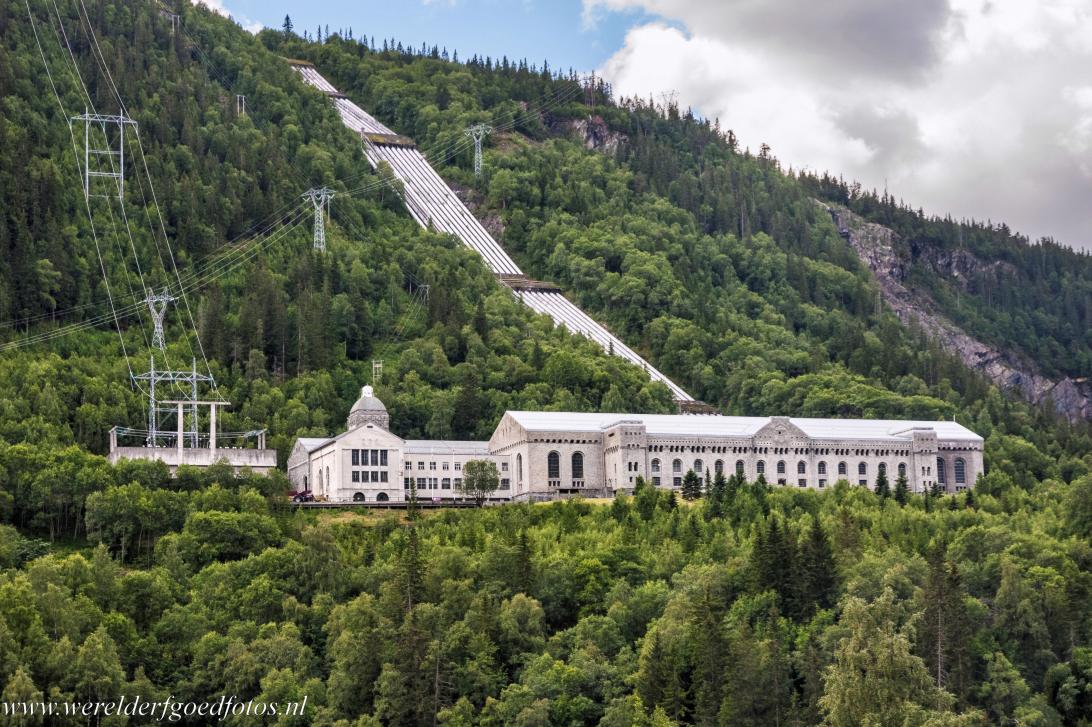
Rjukan-Notodden Industrial Heritage Site: The Vemork hydroelectric plant is situated outside Rjukan, the plant was built in 1911and at the time the largest in the world. In 1988, the plant became the Norsk Industriarbeidermuseum, the Norwegian Industrial Workers Museum. The Rjukan-Notodden Industrial Heritage Site is an exceptional combination of industry and natural landscape.The Rjukan-Notodden Industrial Heritage Site comprises hydroelectric power plants, factories, transportsystems, railways and towns. The Rjukan-Notodden Industrial Heritage was declared a UNESCO World Heritage in 2015.

Rjukan-Notodden Industrial Heritage Site: The Vemork hydroelectric plant is situated outside Rjukan, the plant was built in 1911and at the time the largest in the world. In 1988, the plant became the Norsk Industriarbeidermuseum, the Norwegian Industrial Workers Museum. The Rjukan-Notodden Industrial Heritage Site is an exceptional combination of industry and natural landscape.The Rjukan-Notodden Industrial Heritage Site comprises hydroelectric power plants, factories, transportsystems, railways and towns. The Rjukan-Notodden Industrial Heritage was declared a UNESCO World Heritage in 2015.
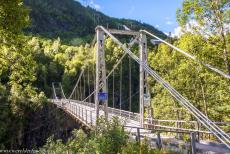
Rjukan-Notodden Industrial Heritage Site: The single-lane suspension bridge spanning the 200 metres deep Vemork Gorge at Rjukan in Telemark. The Vemork hydroelectric plant is situated high up in the mountains and is only reachable by this suspension bridge over the breathtaking deep gorge. The Rjukan-Notodden industrial complex marked the beginning of the Norwegian industrial revolution, it was the first place where hydroelectricity was used to power large scale industry. The Vemork plant outside the small town of Rjukan is the core of the Rjukan-Notodden Industrial Heritage Site.
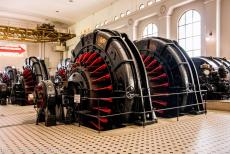
Rjukan-Notodden Industrial Heritage Site: In 1911, the Vemork hydroelectric power plant was built to harness the energy of the waterfalls around Rjukan. The waterfalls and streams on the Hardangervidda, one of the most inhospitable regions in Norway, were used to make electric power, the electric power was used to produce artificial fertilizer. At the time, the Vemork plant was the largest hydroelectric power plant in the world, it supplied electricity to the saltpetre factories in Rjukan and from 1929 to the hydrogen factory in Vemork. In 1928, a new production method was found, the byproduct was heavy water.
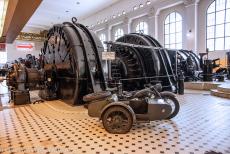
Rjukan-Notodden Industrial Heritage Site: A German military BMW motorbike, used during World War II, on display in the Vemork hydroelectric plant, the plant is situated close to Rjukan. Now, the Vemork hydroelectric plant is the Norwegian Industrial Workers Museum. There are several exhibitions: about the industrial revolution in Norway, Norway during World War II and an exhibition about the heavy water acts of sabotage against the Nazis, who invaded Norway in 1940. There were several acts of sabotage in World War II, the most successfull was 'Operation Gunnerside' (Film: The Heroes of Telemark; book: The Winter Fortress by Neal Bascomb).
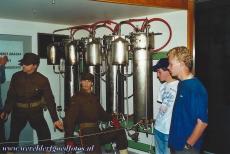
Rjukan-Notodden Industrial Heritage Site: The Vemork hydroelectric plant, a reconstruction of the successfull 'Operation Gunnerside': Members of the resistance planting several explosives to destroy the cascade of electrolysis chambers. Electrolysis chambers were used to produce heavy water. Operation Gunnerside took place on the night of 27-28 February 1943. After the operation, the Vemork heavy water plant was out of production for six months. Later, without consulting their allies, the U.S. army carried out a bombing raid in 1943, the air raid killed many innocent civilians and damaged the factory, but the stock of heavy water was not destroyed.
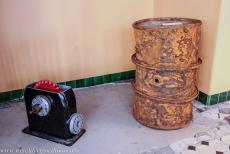
Rjukan-Notodden Industrial Heritage Site: A barrel of heavy water. The railway ferry Hydro was carrying 600 kg of heavy water the day that she was sunk by the Norwegian resistance. In the early 1990s the wreck of the ferry Hydro was found by a mini-submarine, also barrels containing heavy water were found on board. Two barrels of heavy water have been salvaged. Analyses of the contents of one of the sealed barrels confirmed that they contained heavy water. One of the barrels can be viewed in the former Vemork hydroelectric plant, now the Norwegian Industrial Workers Museum. The Vemork hydroelectric plant was closed in 1971.
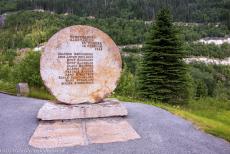
Rjukan-Notodden Industrial Heritage Site: A memorial just outside Rjukan to commemorate the 'Heroes of Telemark'. The Vemork hydroelectric plant was the first mass producer of heavy water in the world. Norway was occupied in 1940 by Nazi Germany, the Nazis used heavy water trying to produce an atomic bomb. To prevent this project, the Vemork hydroelectric plant was sabotaged in 'Operation Gunnerside', carried out by Norwegian resistance fighters, trained in Britain. This was the most successfull act of sabotage in all of World War II.
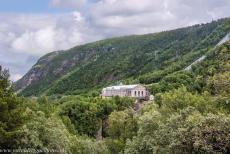
Rjukan-Notodden Industrial Heritage Site: The Vemork hydroelectric plant is situated high up in the mountains and surrounded by the vast high mountain plateau of the Hardangervidda. The Rjukan-Notodden Industrial Heritage Site contributed to the fact that Norway has become one of the wealthiest countries in the world within hundred years. The Rjukan-Notodden Industrial Heritage Site is 80 km long and stretches from the dam on Lake Møsvatn to Notodden, it follows the water flow from Lake Møsvatn to Lake Heddalsvatnet near Notodden. The Rjukan-Notodden Industrial Heritage Site was inscribed on the UNESCO World Heritage List in 2015.
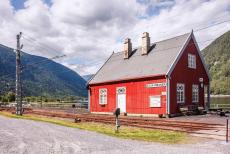
Rjukan-Notodden Industrial Heritage Site: The Mæl Railway Station of the Rjukanbanen in Tinn Municipality. The Mæl Station is the terminus of the Rjukanbanen railway, from here the railway wagons were transferred to the railway ferry to the village of Tinnoset. The Rjukan-Notodden Industrial Heritage Site comprises hydroelectric power plants, factories, transportsystems and towns. The railways of Rjukanbanen and Tinnosbanen, and the Telemark Waterways, composed of lakes and rivers, were used to transport goods and people. The Rjukan-Notodden Industrial Heritage Site is a UNESCO World Heritage Site.
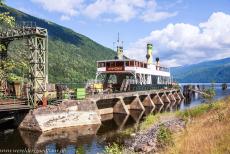
Rjukan-Notodden Industrial Heritage Site: The SF Ammonia at Mæl. The Ammonia was a steam powered railway ferry on Lake Tinnsjø, the ferry connected the Rjukanbanen and Tinnosbanen, at Mæl and Tinnoset. The SF Ammonia was built in 1929, it was the third railway ferry that was used by Norsk Hydro to transport heavy water, chemicals and passengers. The SF Hydro, built in 1914, was a sistership of the Ammonia. After the sinking of the SF Hydro in 1944 by Norwegian resistance fighters to prevent the Nazis from sending heavy water to Germany, the Ammonia had to do the main transport across Lake Tinnsjø. The SF Ammonia is one of the four remaining steam powered ferries in the world.
